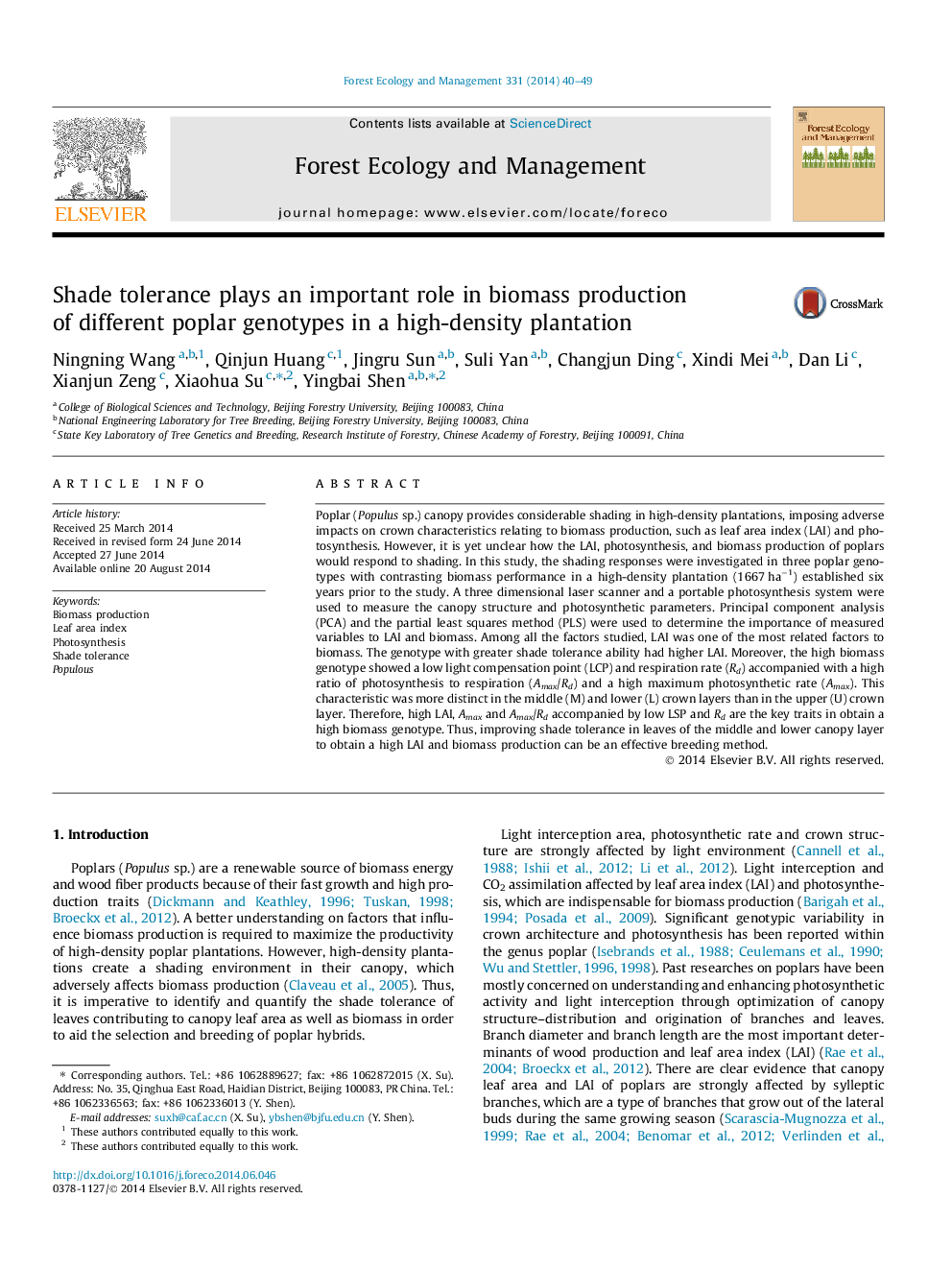| کد مقاله | کد نشریه | سال انتشار | مقاله انگلیسی | نسخه تمام متن |
|---|---|---|---|---|
| 86440 | 159189 | 2014 | 10 صفحه PDF | دانلود رایگان |
• Genotypes with shade tolerance characters have a high biomass production.
• LAI plays a more important role than photosynthesis per unit leaf area in biomass.
• Genotypes with shade tolerance leaves in crown have high LAI.
• Improving shade tolerance to get a high biomass will be an effective breeding method.
Poplar (Populus sp.) canopy provides considerable shading in high-density plantations, imposing adverse impacts on crown characteristics relating to biomass production, such as leaf area index (LAI) and photosynthesis. However, it is yet unclear how the LAI, photosynthesis, and biomass production of poplars would respond to shading. In this study, the shading responses were investigated in three poplar genotypes with contrasting biomass performance in a high-density plantation (1667 ha−1) established six years prior to the study. A three dimensional laser scanner and a portable photosynthesis system were used to measure the canopy structure and photosynthetic parameters. Principal component analysis (PCA) and the partial least squares method (PLS) were used to determine the importance of measured variables to LAI and biomass. Among all the factors studied, LAI was one of the most related factors to biomass. The genotype with greater shade tolerance ability had higher LAI. Moreover, the high biomass genotype showed a low light compensation point (LCP) and respiration rate (Rd) accompanied with a high ratio of photosynthesis to respiration (Amax/Rd) and a high maximum photosynthetic rate (Amax). This characteristic was more distinct in the middle (M) and lower (L) crown layers than in the upper (U) crown layer. Therefore, high LAI, Amax and Amax/Rd accompanied by low LSP and Rd are the key traits in obtain a high biomass genotype. Thus, improving shade tolerance in leaves of the middle and lower canopy layer to obtain a high LAI and biomass production can be an effective breeding method.
Journal: Forest Ecology and Management - Volume 331, 1 November 2014, Pages 40–49
